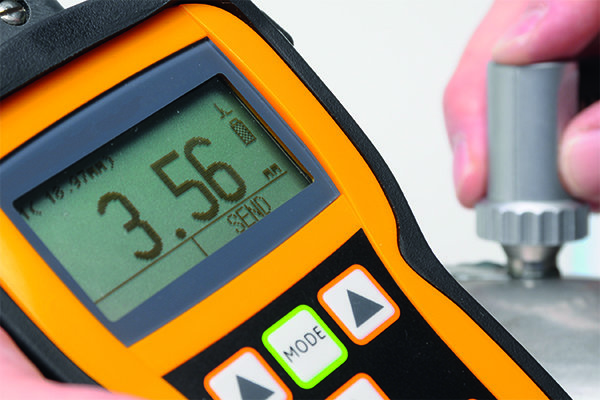Business
Choosing the Right Handheld Ultrasonic Thickness Gauge for Your Needs

When it comes to measuring the thickness of materials with precision, handheld ultrasonic thickness gauges are indispensable tools. Whether you’re involved in industrial maintenance, manufacturing, or construction, selecting the right ultrasonic thickness gauge can significantly impact the accuracy and efficiency of your work. In this comprehensive guide, we will explore the key factors to consider when choosing a handheld ultrasonic thickness gauge to ensure it meets your specific needs.
Understanding Ultrasonic Thickness Gauges
Before diving into the selection process, let’s start by understanding what handheld ultrasonic thickness gauges are and how they work.
What is an Ultrasonic Thickness Gauge?
An ultrasonic thickness gauge is a handheld device used to measure the thickness of various materials, such as metals, plastics, and composites, by utilizing high-frequency sound waves. These gauges employ a process called ultrasonic pulse-echo to determine material thickness. Here’s a simplified overview of how it works:
- Transducer: The gauge sends a high-frequency sound wave (ultrasonic pulse) towards the material’s surface using a transducer.
- Sound Wave Propagation: The sound wave travels through the material until it encounters the back surface or a different material interface.
- Echo Detection: Upon reaching the back surface or another material interface, the sound wave reflects back towards the transducer, creating an echo.
- Measurement: The gauge measures the time it takes for the sound wave to travel to the back surface and back (known as the time of flight) and calculates the material’s thickness based on the speed of sound in the material.
Now that we have a basic understanding of how these devices operate, let’s delve into the factors you should consider when selecting the right handheld ultrasonic thickness gauge for your needs.
Factors to Consider
1. Material Type
The type of materials you intend to measure is a critical consideration. Different materials have varying acoustic properties, and some ultrasonic thickness gauges are better suited for specific materials. For example, if you work primarily with metals, you’ll want a gauge optimized for metal thickness measurements.
2. Thickness Range
Consider the range of thicknesses you need to measure. Some gauges are designed for measuring thin materials, while others excel at measuring thicker sections. Ensure the gauge you choose can cover the full range of thicknesses relevant to your application.
3. Measurement Accuracy
Accuracy is paramount in many industries. Look for a gauge with a high level of measurement accuracy. It’s advisable to choose a model that meets or exceeds industry standards for accuracy.
4. Transducer Frequency
Ultrasonic thickness gauges come with different transducer frequencies. Higher frequencies are suitable for thin materials, while lower frequencies penetrate thicker materials more effectively. Select a gauge with the appropriate transducer frequency for your materials.
5. Display and Interface
The gauge’s display and user interface should be easy to read and navigate. Consider factors like screen size, clarity, and whether it provides instant measurement readings.
6. Data Storage and Transfer
If you need to record and transfer measurement data, choose a gauge with adequate data storage capacity and connectivity options, such as USB or Bluetooth.
7. Durability and Build Quality
For industrial or field applications, durability is crucial. Ensure the gauge is built to withstand the conditions of your work environment, including resistance to dust, moisture, and impact.
8. Battery Life
Long battery life is essential for uninterrupted use. Check the estimated battery life of the gauge and consider whether it meets your requirements.
9. Calibration and Certification
Make sure the gauge can be easily calibrated and complies with relevant industry standards and certifications.
10. Budget
Finally, consider your budget. While quality and features are essential, it’s important to find a gauge that strikes a balance between meeting your requirements and staying within your budget constraints.
Conclusion
Choosing the right handheld ultrasonic thickness gauge is a decision that should not be taken lightly. By carefully considering factors such as material type, thickness range, accuracy, transducer frequency, display, durability, and budget, you can ensure that you select a gauge that perfectly aligns with your specific needs. Remember that investing in a high-quality gauge can lead to improved efficiency, accuracy, and ultimately, success in your industry. So, take your time, do your research, and make an informed choice that will benefit your work for years to come.


